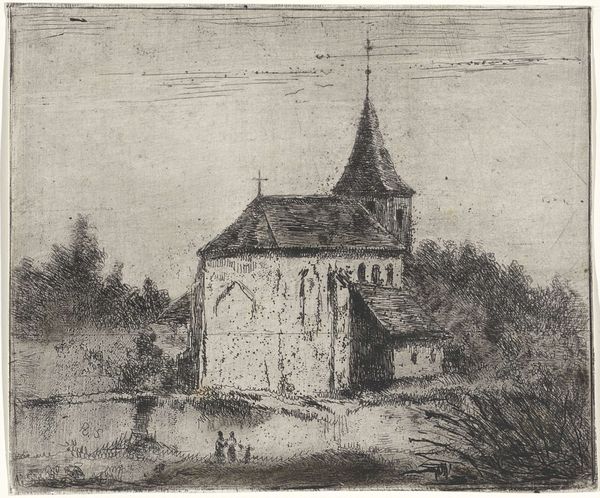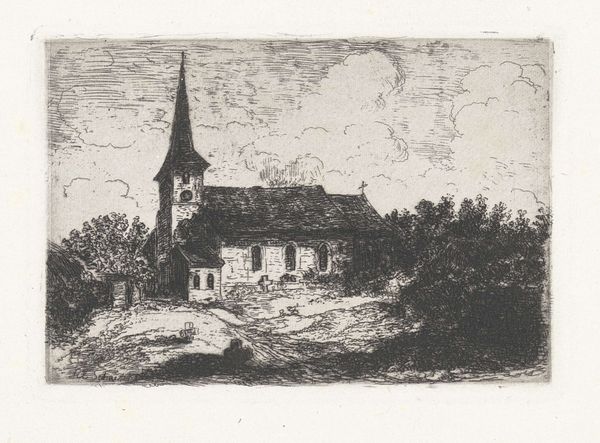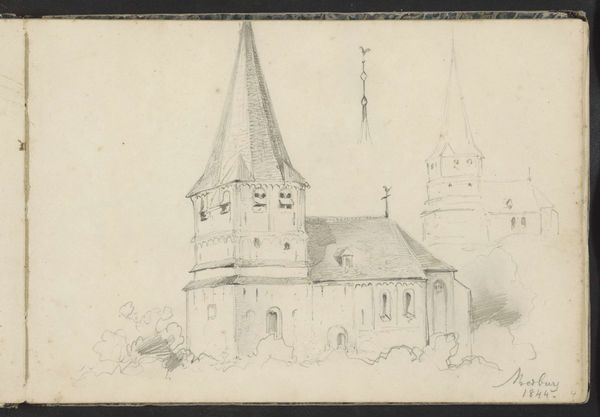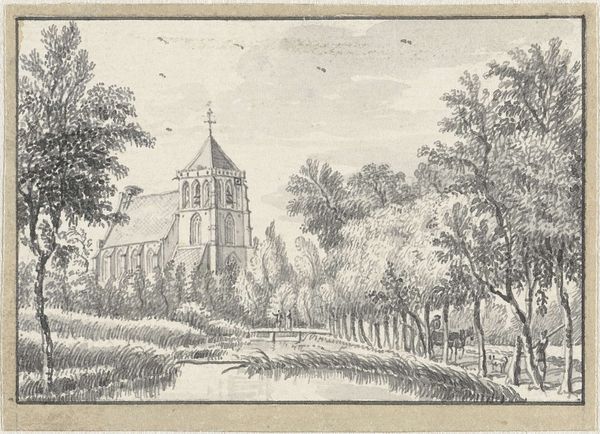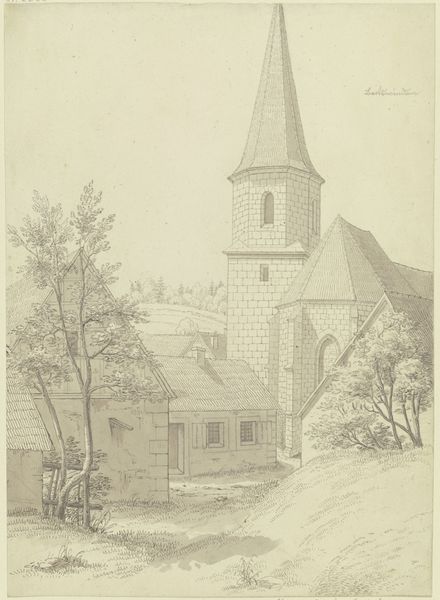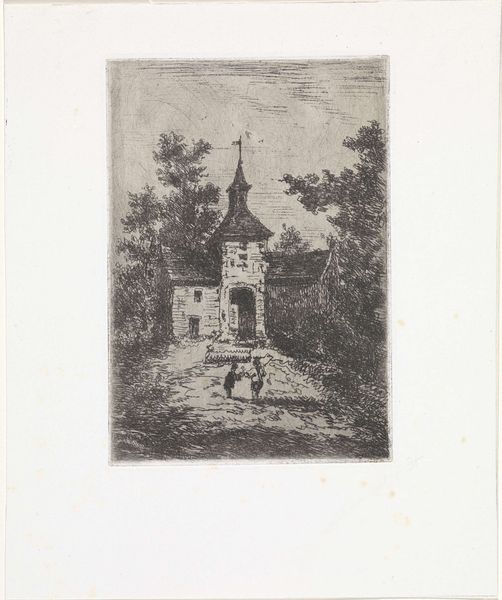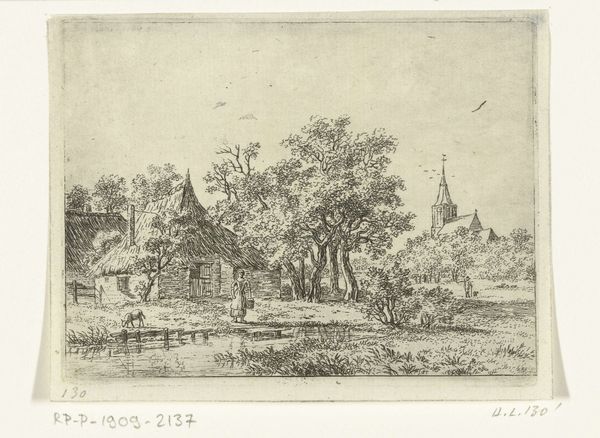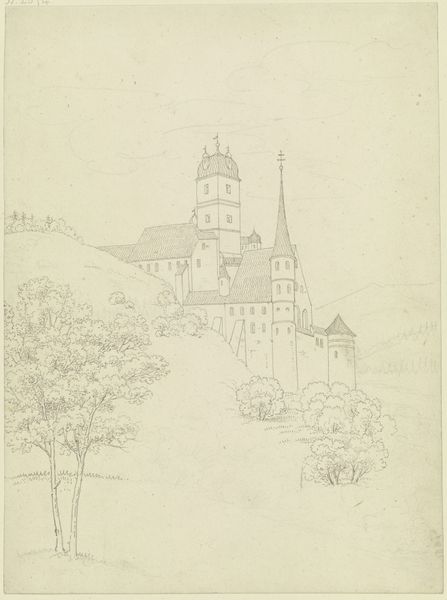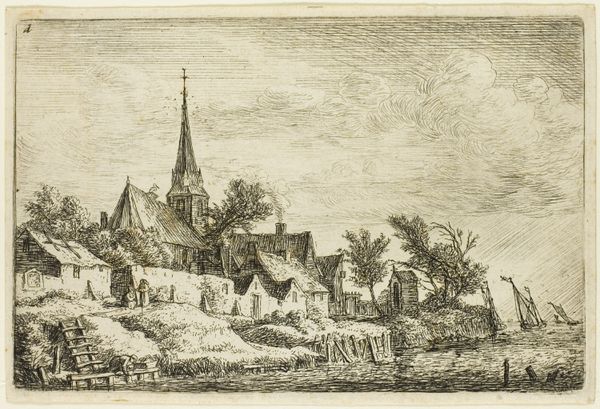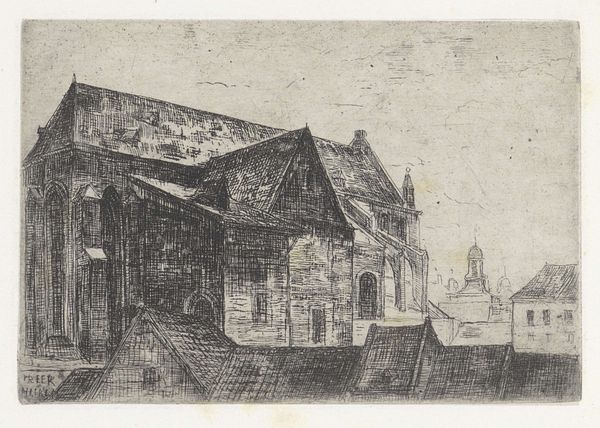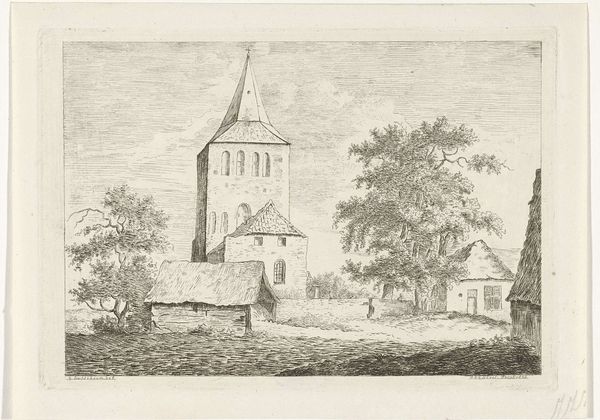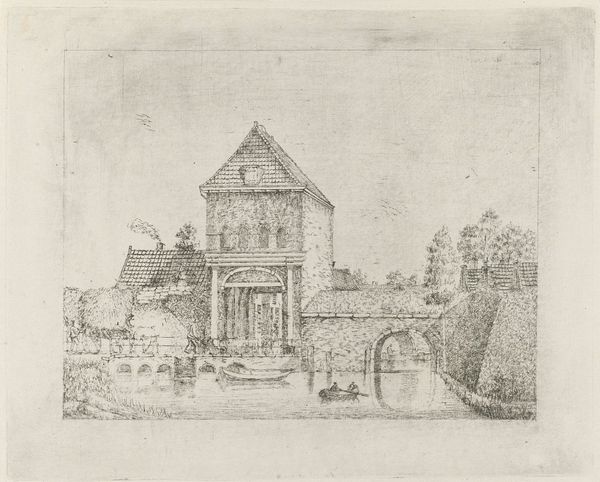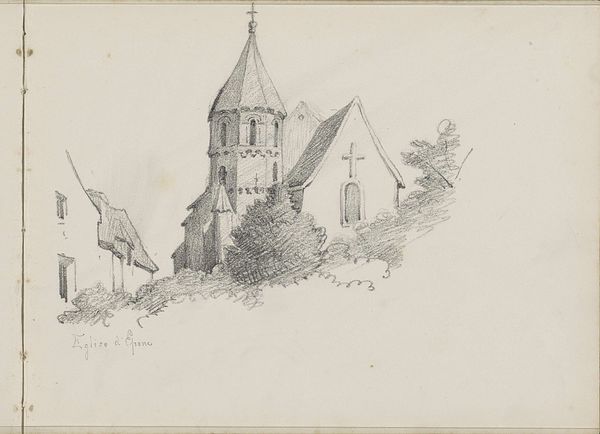
drawing, etching, ink, architecture
#
drawing
#
etching
#
pencil sketch
#
landscape
#
ink
#
architecture
Dimensions: height 191 mm, width 223 mm
Copyright: Rijks Museum: Open Domain
Editor: This is Alexander Schaepkens' "Kleine Kerk", made sometime between 1831 and 1904, using ink, etching and drawing techniques. It reminds me of a sketch – it feels preliminary and quite subtle. What catches your eye about it? Curator: Immediately, the composition strikes me. The diminutive church is positioned as the focal point, yet it’s nestled within a landscape almost dominating in its textural contrast. Notice the rigorous detail of the church’s structure juxtaposed with the looser, more gestural rendering of the surrounding foliage. Editor: The difference in the mark-making is interesting. How do you think that contrast functions? Curator: I would argue it directs the viewer’s gaze. The etcher's emphasis on the church, rendered with precision, forces our attention there. Consider the use of line – crisp and defined for the architecture, versus a more ambiguous, almost chaotic application in the surrounding nature. It's a study in contrasts, wouldn't you agree? Editor: Definitely. It almost feels like a visual argument, highlighting the difference between the man-made and the natural world. It makes you think about how architecture interacts with the landscape, how the artist interpreted both subjects, and ultimately translated those views via an etching. Thank you! Curator: Indeed! A rewarding exploration of form and line, wouldn’t you say?
Comments
No comments
Be the first to comment and join the conversation on the ultimate creative platform.
